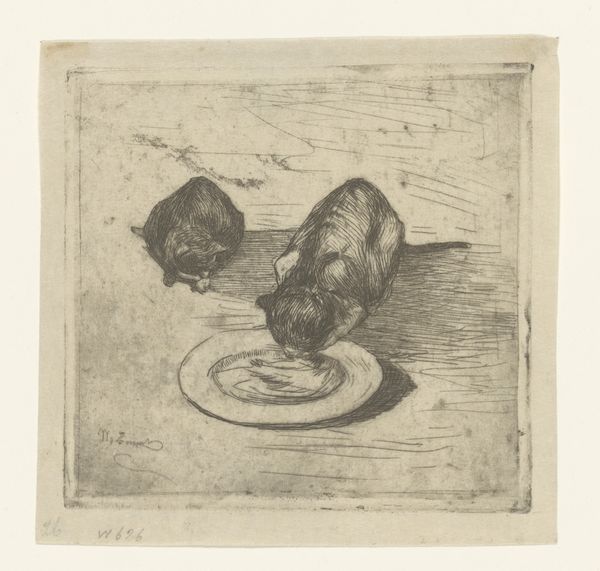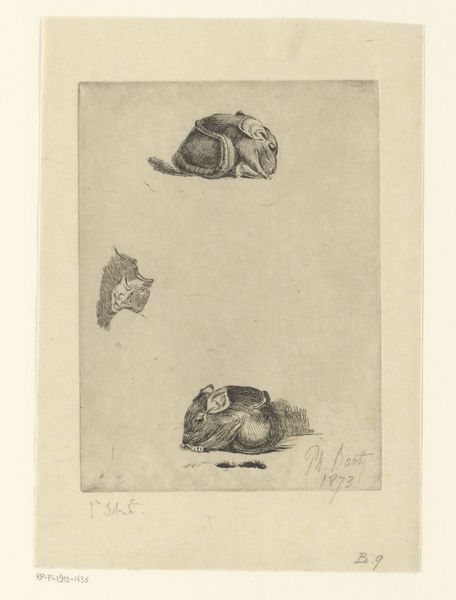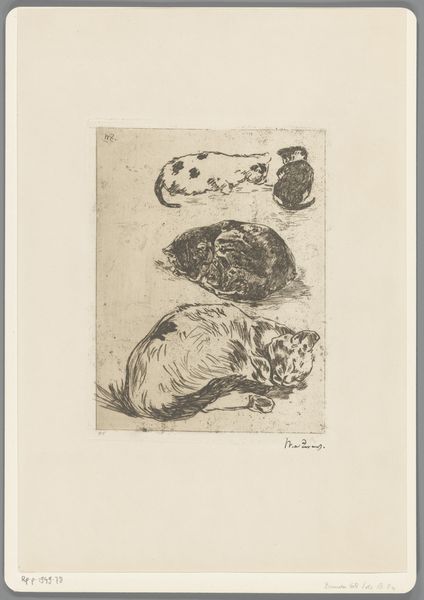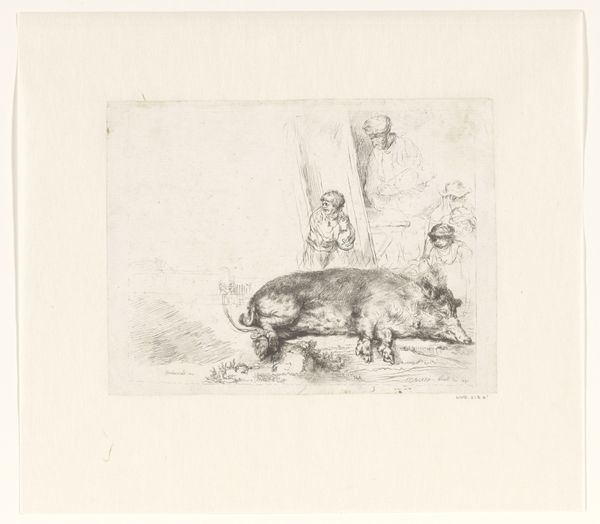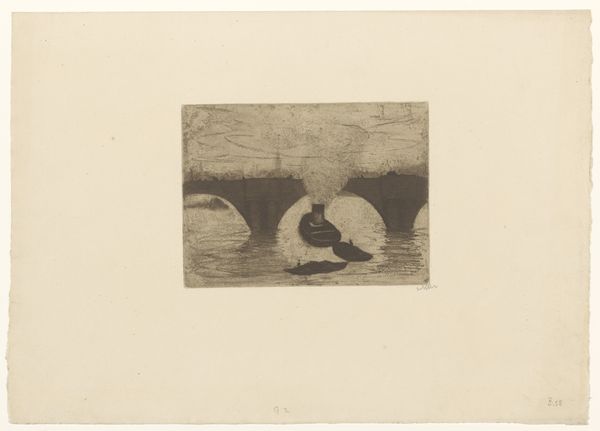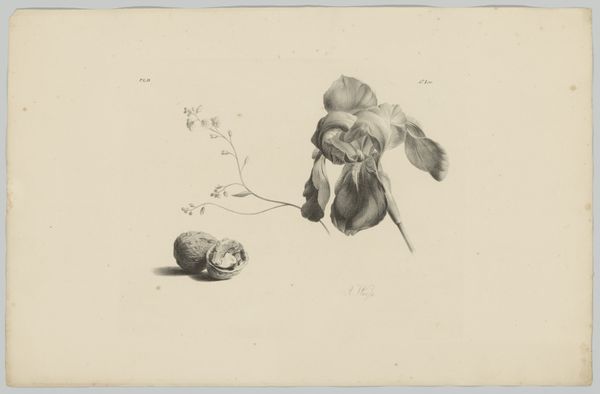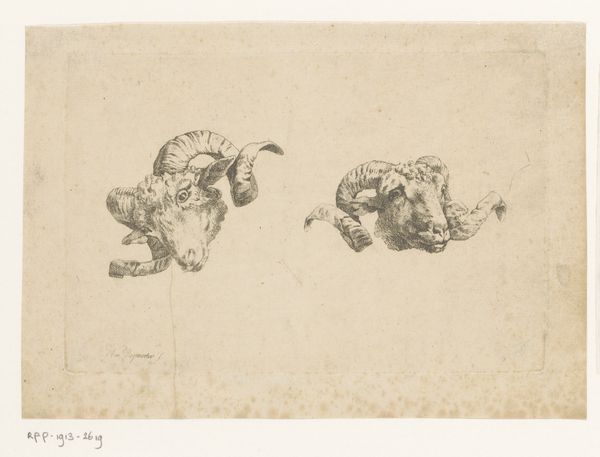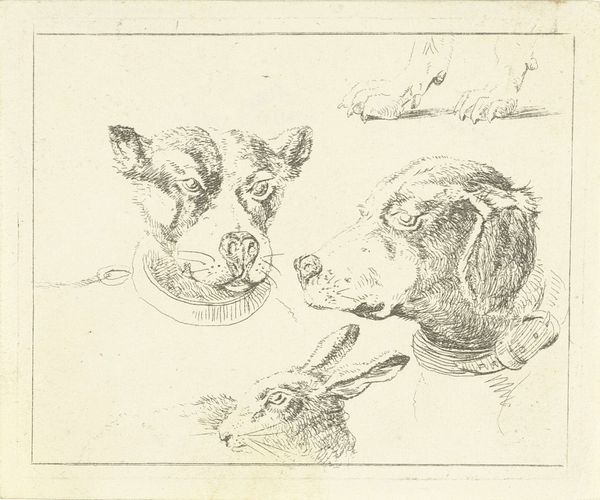
drawing, print, etching
#
pencil drawn
#
drawing
#
aged paper
#
toned paper
#
light pencil work
# print
#
etching
#
pencil sketch
#
old engraving style
#
personal sketchbook
#
pencil drawing
#
sketchbook drawing
#
pencil work
#
genre-painting
#
realism
Dimensions: height 123 mm, width 131 mm
Copyright: Rijks Museum: Open Domain
Curator: This artwork is titled "Twee katten, één drinkend uit een bord," or "Two Cats, One Drinking From A Plate." Created around 1885 by Willem de Zwart, it's an etching. Editor: My first thought? Humble, cozy...like a quick glimpse into a peaceful home scene. It feels like something you'd find tucked into the back pages of an old book. Curator: It absolutely evokes that intimate feel. De Zwart, often categorized within the Hague School, was interested in the everyday lives of ordinary people, a clear turn away from idealized depictions. Think about how his portrayal contrasts with academic painting styles that glorify history and mythology. He instead chooses cats drinking milk, and I suspect there’s commentary in that choice about accessibility of subjects. Editor: Yeah, totally get that. And speaking of accessibility, there's something about the sketchy lines – it's light pencil work – that makes it feel super immediate, like he just quickly jotted this down. It’s as if we're seeing something deeply personal and candid. I wonder if these were his cats? Curator: That intimacy could indeed stem from personal observation. Genre painting in this period often romanticized rural life, yet here we see something more familiar: the domestic sphere, pets included, quietly asserting their own presence in modern life. Consider the social context—how rapidly industrialization changed daily routines, including the human-animal bond. Editor: I can just imagine the scratchy nib of his etching pen making those lines. The simplicity in rendering the subject gives the ordinary subject matter, like you say, this unexpected poignancy. Curator: And within that poignancy lies, potentially, a quiet act of rebellion. By not adhering to grand narratives, artists like De Zwart create space for viewers to consider dignity and worth in the quotidian. It allows for a more inclusive narrative in the larger scope of art history. Editor: Definitely a refreshing take! It's so cool how two little cats slurping from a plate can unlock a whole history of art and society! Thanks for unpacking that. Curator: Likewise! Thinking about how De Zwart quietly shifted focus opens new dialogues regarding who—or in this case, *what*—deserves our artistic attention and how representations reflect wider societal value.
Comments
No comments
Be the first to comment and join the conversation on the ultimate creative platform.
